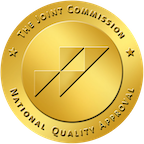Skip To Rehab Listing
Alcohol and Drug Recovery Facility Settings and Rehabilitation Techniques in Amityville, NY.
Individuals in Amityville who have a drug and alcohol abuse problem have multiple nearby recovery programs from which they can choose such as: inpatient drug abuse treatment, long term rehabs, outpatient detox facilities, intensive outpatient treatment, short term drug addiction treatment
In addition, people can pick from a variety of methods for their recovery in order to obtain the most beneficial care, such as: rational emotive behavioral therapy, dual diagnosis drug rehab, substance abuse counseling approach, individual psychotherapy, 12-step facilitation approach, matrix model
Special Programs for Addiction Treatment
Drug and alcohol rehab programs in Amityville can also handle a client's particular addiction treatment needs through a variety of special services. These services can include the following: domestic violence, substance abuse education, aftercare/continuing care, active duty military, veterans, social skills development
Treatment Payment Options
The cost of substance abuse treatment can be a worry for many patients and their families. That is why local alcohol and drug rehab centers provide various payment options that cater to the various financial realities of patients. Here are some of the forms of payment accepted by these programs: private health insurance, private pay, sliding fee scale, military insurance, state welfare or child and family services funds, county or local government funds
Often, these facilities will work with clients to figure out the best payment method for their needs.
People who have an issue with drug and alcohol addiction can get effective care in Amityville via a wide variety of rehabilitation centers, treatment approaches, specialized programs, and payment options. The level of choice makes drug and alcohol treatment accessible for many local residents in need.
Commonly Asked Questions about Addiction and Treatment
How can I tell if I am an enabler?
"Enabling is a behavior often seen in the relationships of individuals struggling with addiction. An enabler, often without realizing it, may protect the individual with addiction from the consequences of their behavior, thus indirectly encouraging continued substance use. If you're unsure whether you might be enabling someone's addiction, consider the following signs:
- Rescuing: If you frequently find yourself covering up or making excuses for the individual's substance use or its consequences - like calling in sick to their job for them, paying their bills, or lying to others to conceal their addiction - this could be enabling.
- Denying: If you downplay the severity of their addiction, dismiss the negative impact it has, or avoid discussing it entirely, you may be enabling.
- Avoiding Conflict: If you consistently avoid confrontations or difficult conversations about their substance use out of fear it may cause tension or lead them to use more, this can be a form of enabling.
- Taking on Their Responsibilities: If you've taken on their duties - like household chores, parenting responsibilities, or work commitments - to compensate for their inability or unwillingness to fulfill them due to their addiction, you could be enabling.
- Providing Financial Support: If you're frequently giving them money, which they could be using to support their addiction, or bailing them out of financial problems caused by their substance use, this is often a clear sign of enabling.
- Ignoring Damaging Behaviors: If you tend to overlook or dismiss destructive or harmful behaviors associated with their addiction, you may be enabling.
What does fentanyl do to a person?
Fentanyl is a synthetic opioid pain reliever that is 50 to 100 times more potent than morphine. It's typically used to treat severe pain, especially after surgery, or to manage pain in individuals with chronic illnesses who have developed a tolerance to other opioids.
When used under medical supervision, fentanyl can effectively relieve pain. However, when used illicitly or without a prescription, it can have severe, and even fatal, effects. Here's what fentanyl can do to a person:
Physical Effects: In the short term, fentanyl can induce feelings of relaxation, euphoria, and decreased perception of pain. However, it also slows breathing and can lead to unconsciousness or death from respiratory failure, particularly in high doses or when combined with other substances that depress the central nervous system.
Dependency and Addiction: Fentanyl is highly addictive. Regular use can lead to physical dependence, where the body requires the drug to function normally, and psychological addiction, where a person feels a compulsive need to use the drug despite its harmful consequences.
Overdose Risk: Due to its potency, the risk of overdose with fentanyl is high, especially if a person mistakenly believes they're taking a less potent opioid, as illicit fentanyl is often mixed with other drugs. Overdose can lead to severe respiratory depression, unconsciousness, and death.
Withdrawal: Once a person becomes dependent on fentanyl, stopping its use can result in withdrawal symptoms. These can include muscle and bone pain, sleep problems, diarrhea, vomiting, cold flashes, and uncontrollable leg movements.
Long-Term Health Effects: Chronic fentanyl use can lead to an array of health problems, including severe constipation, increased sensitivity to pain, confusion, depression, and increased risk of infections due to needle sharing (if injected).
Due to its potency and high risk of overdose, non-medical use of fentanyl is extremely dangerous. If you or someone you know is struggling with fentanyl or other opioid use, it's crucial to seek professional help immediately.
What happens when a person overdosed on fentanyl?
Fentanyl is a synthetic opioid that is 50 to 100 times more potent than morphine. It is used medically to treat severe pain, but its potent nature also makes it dangerous when misused or taken in excessive amounts. When a person overdoses on fentanyl, several life-threatening symptoms and complications can occur:
- Respiratory depression: One of the most critical effects of a fentanyl overdose is severe respiratory depression, which occurs when the drug suppresses the brain's ability to control breathing. This can lead to slow, shallow, or irregular breathing, or even cause the person to stop breathing altogether, which can be fatal.
- Unconsciousness: A fentanyl overdose can cause the person to lose consciousness or become unresponsive. In this state, the individual is at a higher risk of choking or suffering from positional asphyxia if they are in an awkward position that restricts their breathing.
- Constricted pupils: An overdose may result in pinpoint pupils, also known as miosis, which is a common sign of opioid intoxication.
- Cyanosis: Due to the lack of oxygen resulting from respiratory depression, the person's skin, lips, and nails may develop a bluish tint, which is called cyanosis.
- Low blood pressure: A fentanyl overdose can lead to a significant drop in blood pressure (hypotension), which may result in dizziness, fainting, or shock.
- Slow or weak pulse: The person's heart rate may become slow or weak, further contributing to the risk of life-threatening complications.
- Muscle rigidity: In some cases, a fentanyl overdose can cause muscle stiffness or rigidity, particularly in the chest and abdominal muscles, which can make it even more difficult to breathe.
- Seizures: Although less common, a fentanyl overdose may also cause seizures in some individuals.
- Coma or death: In severe cases, a fentanyl overdose can lead to coma or death due to respiratory failure, lack of oxygen, or other complications.
If you suspect someone is experiencing a fentanyl overdose, it is crucial to call emergency medical services immediately. Administering naloxone, an opioid antagonist, can temporarily reverse the effects of the overdose, but multiple doses may be needed due to fentanyl's potency. It is essential to note that naloxone is not a substitute for professional medical care, and the person must still receive prompt medical attention to address any underlying complications and ensure proper treatment.













